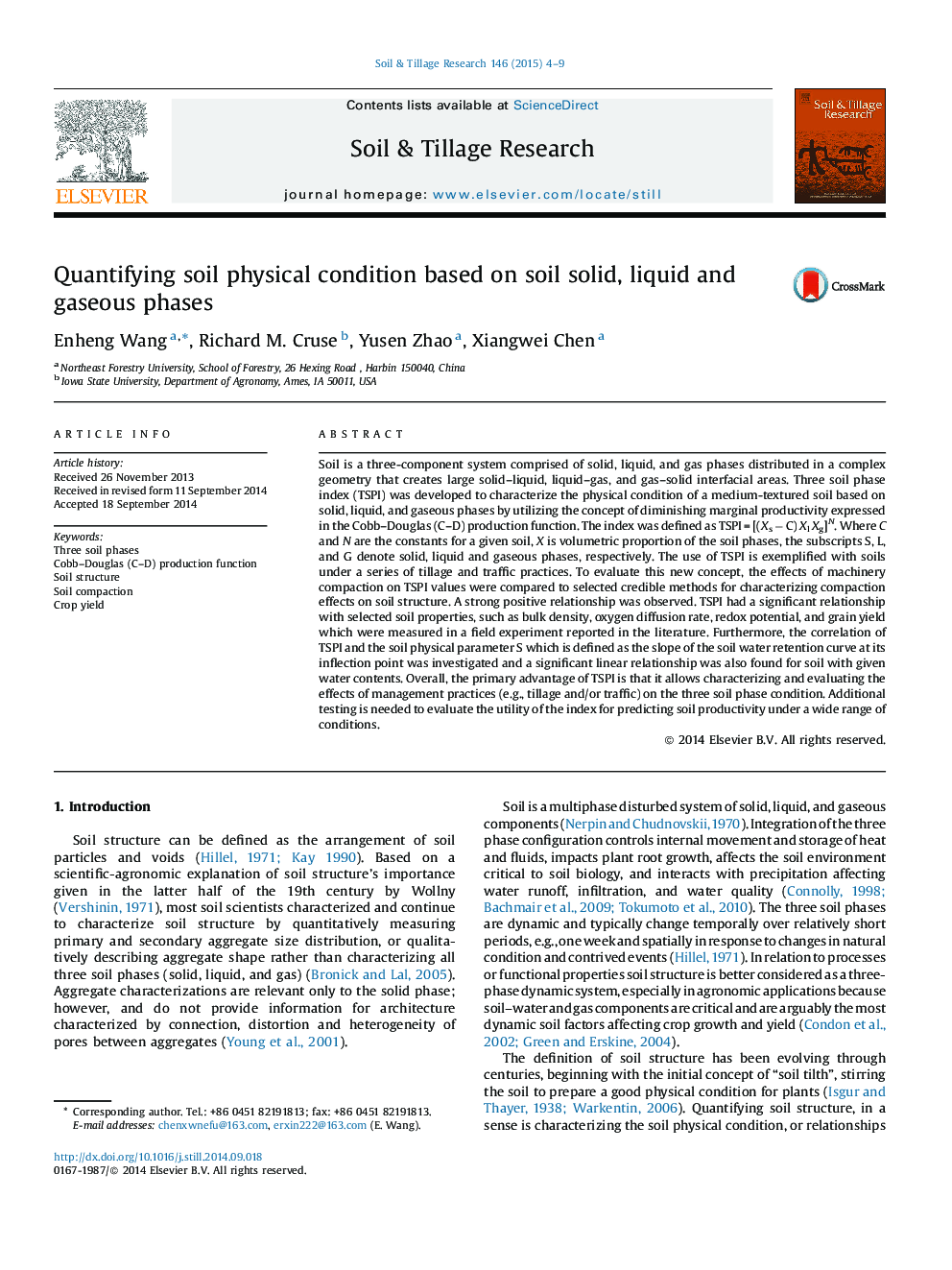| کد مقاله | کد نشریه | سال انتشار | مقاله انگلیسی | نسخه تمام متن |
|---|---|---|---|---|
| 305601 | 513039 | 2015 | 6 صفحه PDF | دانلود رایگان |
• A method to quantify soil structure based on three soil phases is proposed.
• Diminishing marginal returns seem to explain productivity changes related to changes from ideal conditions.
• An alternative method to evaluate tillage and/or traffic on soil physical properties and crop productivity is proposed.
• The new index is significantly correlated with the physical parameter, S, when soil is close to 50% saturated condition.
Soil is a three-component system comprised of solid, liquid, and gas phases distributed in a complex geometry that creates large solid–liquid, liquid–gas, and gas–solid interfacial areas. Three soil phase index (TSPI) was developed to characterize the physical condition of a medium-textured soil based on solid, liquid, and gaseous phases by utilizing the concept of diminishing marginal productivity expressed in the Cobb–Douglas (C–D) production function. The index was defined as TSPI = [(Xs − C) XlXg]N. Where C and N are the constants for a given soil, X is volumetric proportion of the soil phases, the subscripts S, L, and G denote solid, liquid and gaseous phases, respectively. The use of TSPI is exemplified with soils under a series of tillage and traffic practices. To evaluate this new concept, the effects of machinery compaction on TSPI values were compared to selected credible methods for characterizing compaction effects on soil structure. A strong positive relationship was observed. TSPI had a significant relationship with selected soil properties, such as bulk density, oxygen diffusion rate, redox potential, and grain yield which were measured in a field experiment reported in the literature. Furthermore, the correlation of TSPI and the soil physical parameter S which is defined as the slope of the soil water retention curve at its inflection point was investigated and a significant linear relationship was also found for soil with given water contents. Overall, the primary advantage of TSPI is that it allows characterizing and evaluating the effects of management practices (e.g., tillage and/or traffic) on the three soil phase condition. Additional testing is needed to evaluate the utility of the index for predicting soil productivity under a wide range of conditions.
Journal: Soil and Tillage Research - Volume 146, Part A, March 2015, Pages 4–9
